Abstract
Rates of substrate hydrolysis by nonattached bacteria and by bacteria attached to particles derived from marine diatom frustules were estimated by using two substrates, a dipeptide analog and a protein. Adsorption of the two substrates onto the particles was also evaluated. Methyl-coumarinyl-amide-leucine (MCA-leucine) was used to estimate hydrolysis of dipeptides by measuring an increase in fluorescence as MCA-leucine was hydrolyzed to leucine and the fluorochrome methylcoumarin. To examine hydrolysis of a larger molecule, we prepared a radiolabeled protein by 14C-methylation of bovine serum albumin. The rate of protein hydrolysis in samples of particle-attached or nonattached bacteria was estimated by precipitating all nonhydrolyzed protein with cold trichloroacetic acid and then determining the trichloroacetic acid-soluble radiolabeled material, which represented methyl-14C-peptides and -amino acids. About 25% of the MCA-leucine adsorbed to the particles. MCA-leucine was hydrolyzed faster by nonattached than attached bacteria, which was probably related to its tendency to remain dissolved in the liquid phase. In contrast, almost 100% of the labeled protein adsorbed to the particles. Accordingly, protein was much less available to nonattached bacteria but was rapidly hydrolyzed by attached bacteria.
Full text
PDF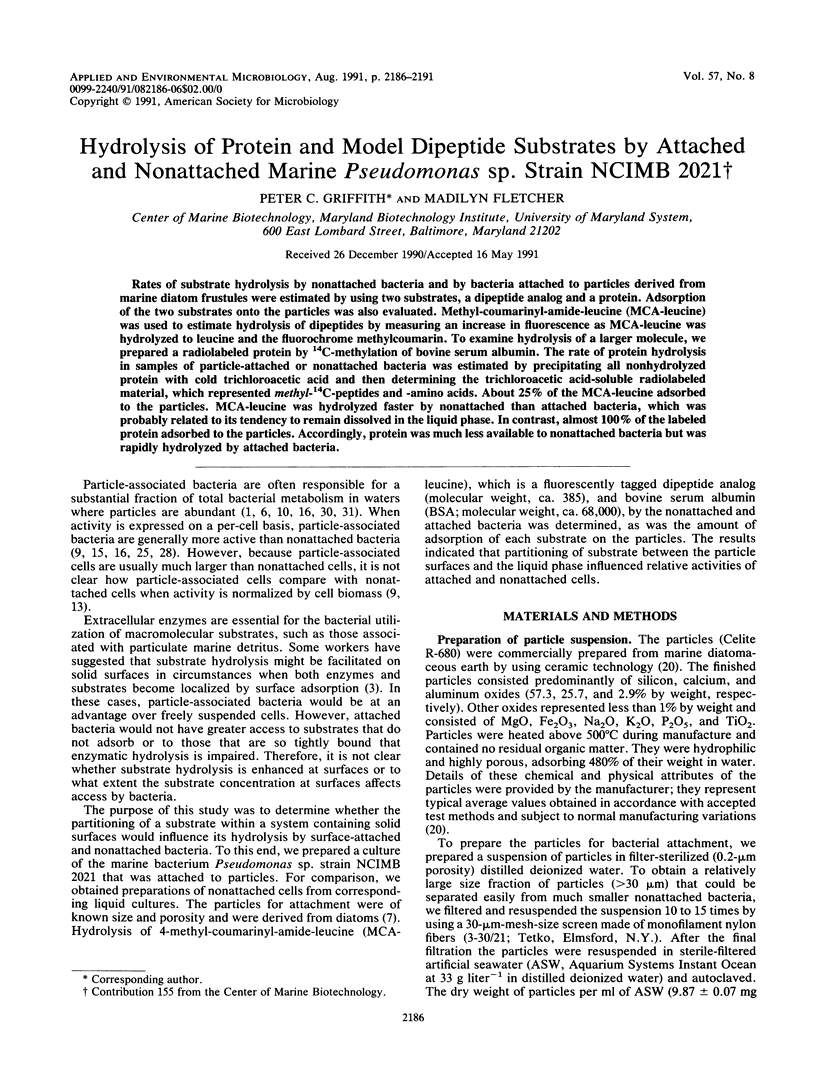
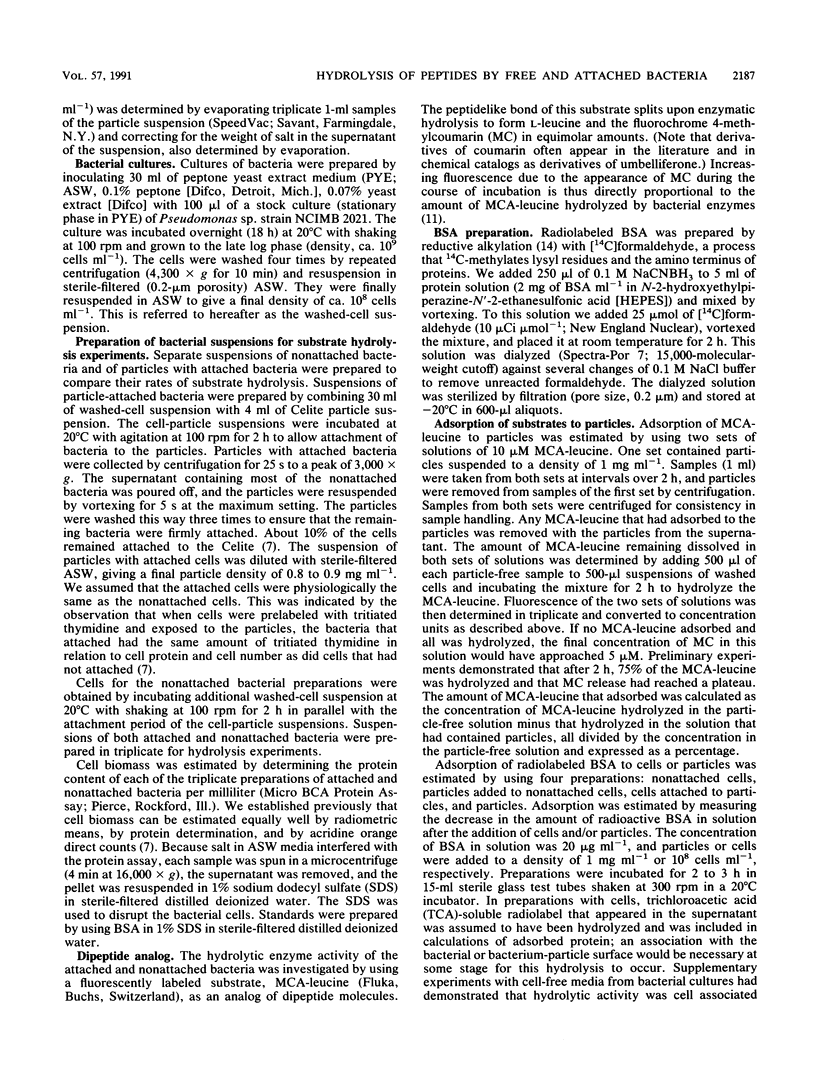
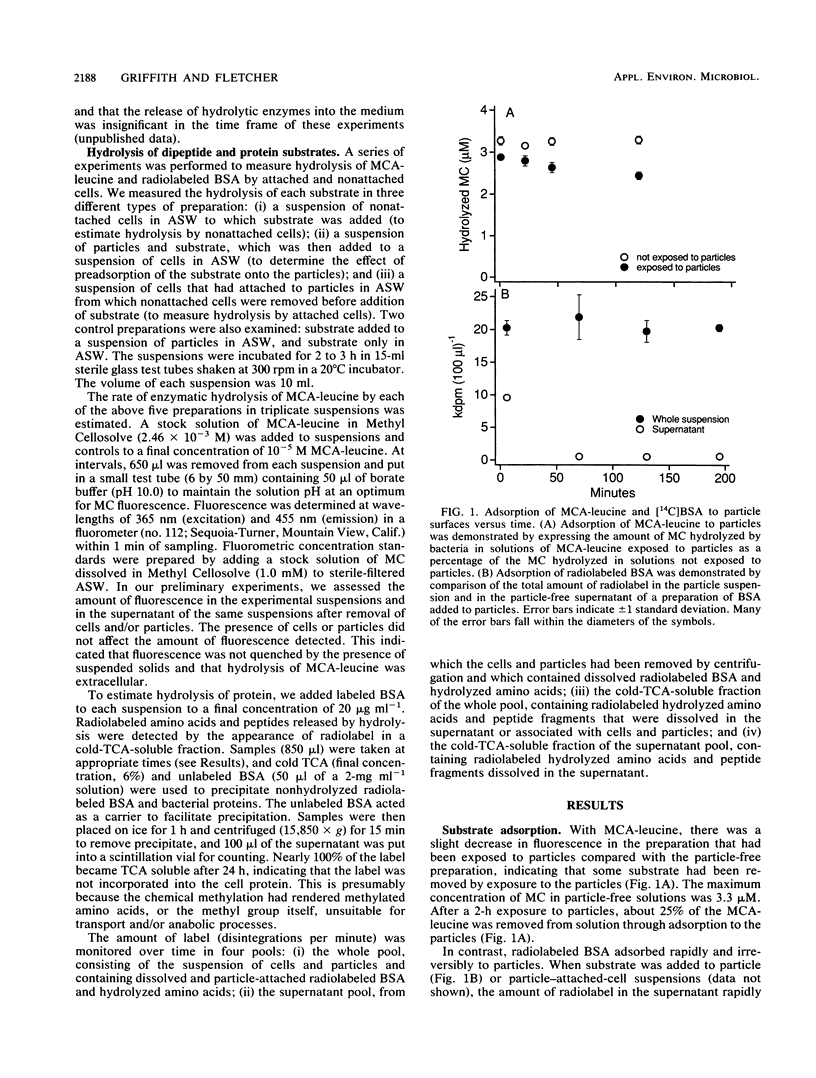
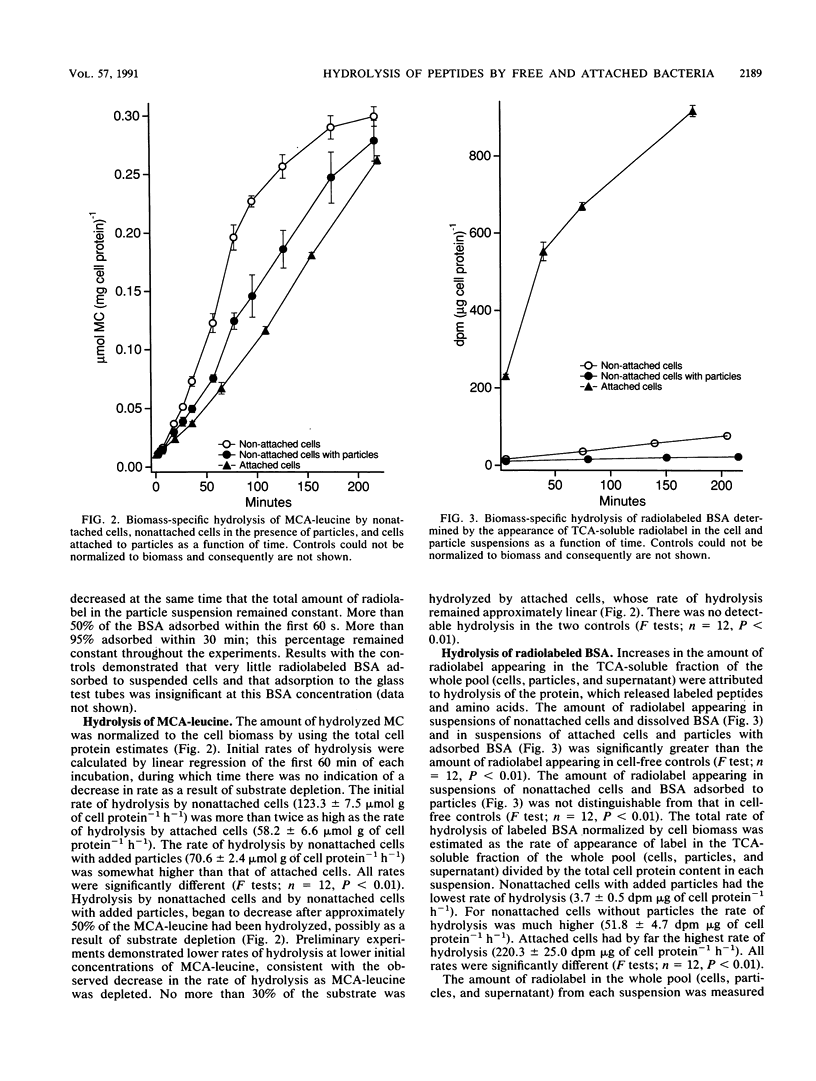
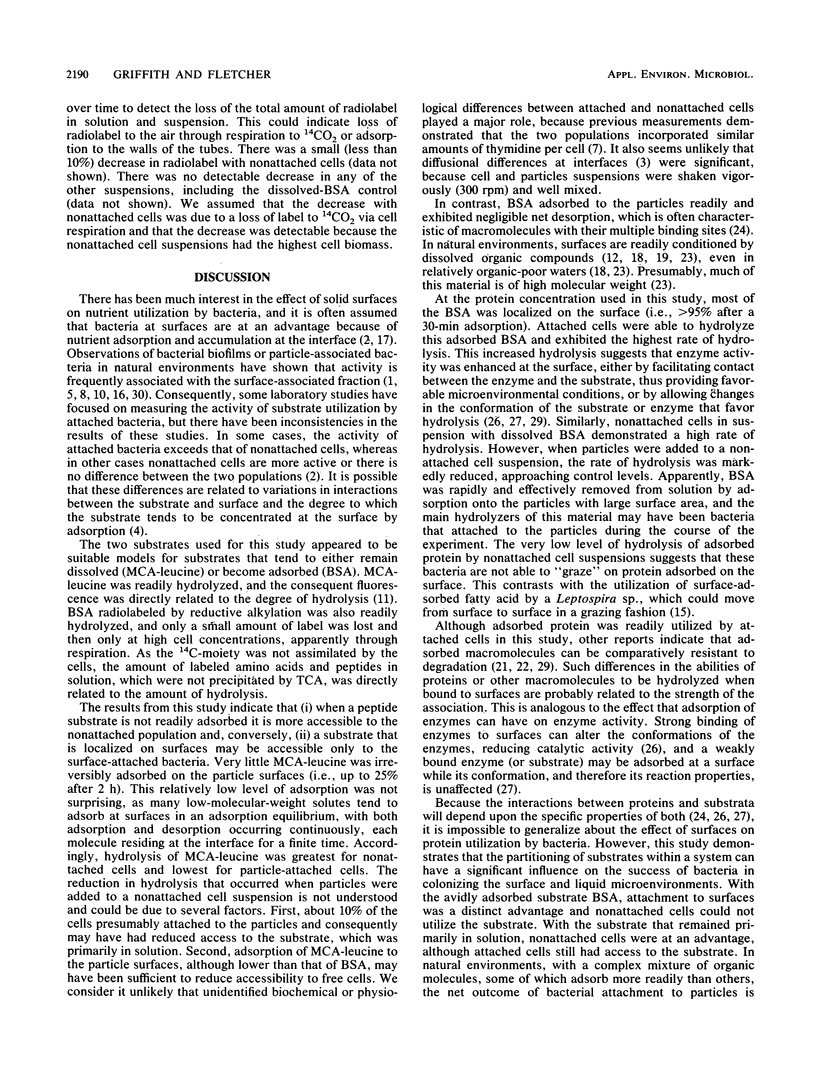
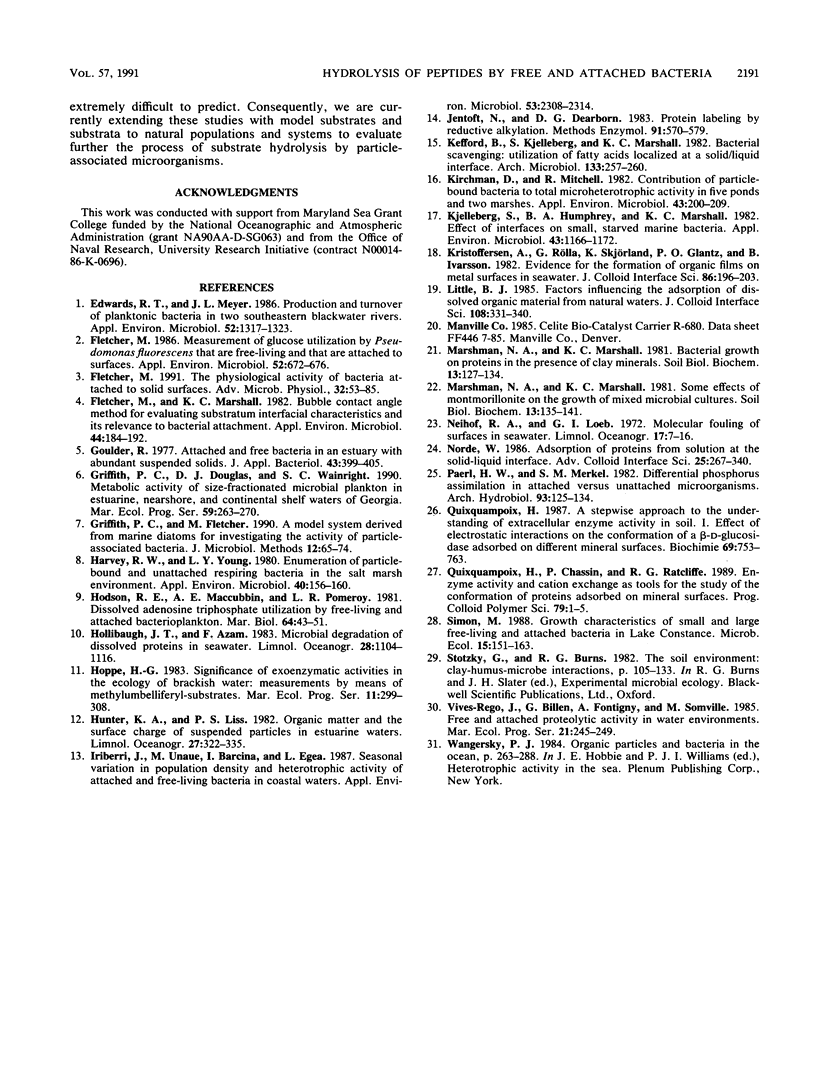
Selected References
These references are in PubMed. This may not be the complete list of references from this article.
- Edwards R. T., Meyer J. L. Production and turnover of planktonic bacteria in two southeastern blackwater rivers. Appl Environ Microbiol. 1986 Dec;52(6):1317–1323. doi: 10.1128/aem.52.6.1317-1323.1986. [DOI] [PMC free article] [PubMed] [Google Scholar]
- Fletcher M., Marshall K. C. Bubble contact angle method for evaluating substratum interfacial characteristics and its relevance to bacterial attachment. Appl Environ Microbiol. 1982 Jul;44(1):184–192. doi: 10.1128/aem.44.1.184-192.1982. [DOI] [PMC free article] [PubMed] [Google Scholar]
- Fletcher M. Measurement of Glucose Utilization by Pseudomonas fluorescens That Are Free-Living and That Are Attached to Surfaces. Appl Environ Microbiol. 1986 Oct;52(4):672–676. doi: 10.1128/aem.52.4.672-676.1986. [DOI] [PMC free article] [PubMed] [Google Scholar]
- Fletcher M. The physiological activity of bacteria attached to solid surfaces. Adv Microb Physiol. 1991;32:53–85. doi: 10.1016/s0065-2911(08)60005-3. [DOI] [PubMed] [Google Scholar]
- Harvey R. W., Young L. Y. Enumeration of particle-bound and unattached respiring bacteria in the salt marsh environment. Appl Environ Microbiol. 1980 Jul;40(1):156–160. doi: 10.1128/aem.40.1.156-160.1980. [DOI] [PMC free article] [PubMed] [Google Scholar]
- Iriberri J., Unanue M., Barcina I., Egea L. Seasonal variation in population density and heterotrophic activity of attached and free-living bacteria in coastal waters. Appl Environ Microbiol. 1987 Oct;53(10):2308–2314. doi: 10.1128/aem.53.10.2308-2314.1987. [DOI] [PMC free article] [PubMed] [Google Scholar]
- Jentoft N., Dearborn D. G. Protein labeling by reductive alkylation. Methods Enzymol. 1983;91:570–579. doi: 10.1016/s0076-6879(83)91052-2. [DOI] [PubMed] [Google Scholar]
- Kirchman D., Mitchell R. Contribution of particle-bound bacteria to total microheterotrophic activity in five ponds and two marshes. Appl Environ Microbiol. 1982 Jan;43(1):200–209. doi: 10.1128/aem.43.1.200-209.1982. [DOI] [PMC free article] [PubMed] [Google Scholar]
- Kjelleberg S., Humphrey B. A., Marshall K. C. Effect of interfaces on small, starved marine bacteria. Appl Environ Microbiol. 1982 May;43(5):1166–1172. doi: 10.1128/aem.43.5.1166-1172.1982. [DOI] [PMC free article] [PubMed] [Google Scholar]
- Norde W. Adsorption of proteins from solution at the solid-liquid interface. Adv Colloid Interface Sci. 1986 Sep;25(4):267–340. doi: 10.1016/0001-8686(86)80012-4. [DOI] [PubMed] [Google Scholar]
- Quiquampoix H. A stepwise approach to the understanding of extracellular enzyme activity in soil. I. Effect of electrostatic interactions on the conformation of a beta-D-glucosidase adsorbed on different mineral surfaces. Biochimie. 1987 Jun-Jul;69(6-7):753–763. doi: 10.1016/0300-9084(87)90196-9. [DOI] [PubMed] [Google Scholar]


